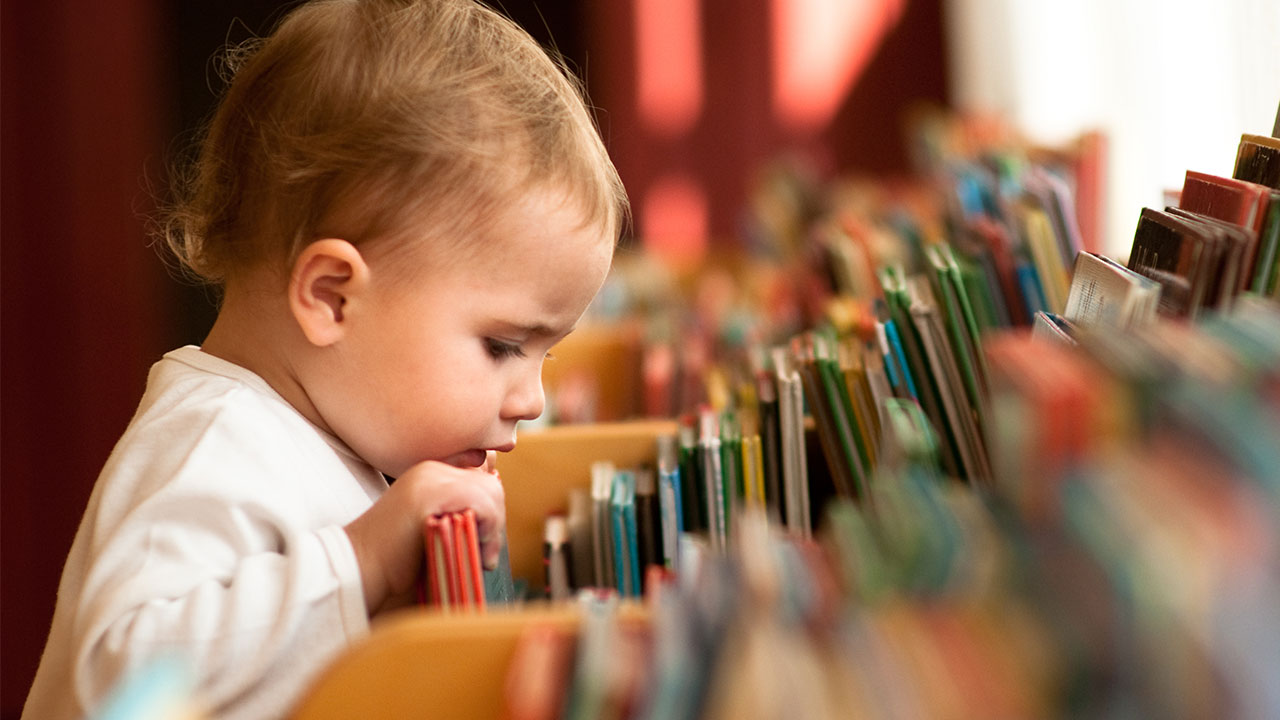
By the time your child reaches 18 months, he or she will have already learned to identify and process quite a few basic things. Children at this age can distinguish shapes, colors, common everyday objects, etc. Their language skills are developing rapidly as they are able to produce and repeat basic sounds and words, and they are now at the point where they can start putting these words together sequentially.
There are quite a few ways that you can build upon this existing knowledge to help your toddler develop further cognitive skills as age two approaches. This article will outline a number of ways that you can help your little one start to blossom linguistically.
Identifying names and other sounds
As children’s language development grows during this period, you’ll want to make a concerted effort to help them learn names and other sounds (“What does the duck say?”). You’ll be surprised at how many sounds toddlers are able to associate with different animals, for example. Their brains are a lot more nimble at that age than ours are!
This identification ability also applies to the names of people, as well as objects and any nouns that are part of their daily experience. Be sure to repeat the names of the people that your child knows regularly, as well as foods, toys, and other objects that are part of your daily activities.
Learning from stories
It may sound obvious, but reading to your child is an essential way to help develop his or her language skills. Stories that are read out loud, particularly when accompanied by pictorial representations of objects and sequences, will now resonate in the mind of your child to a much greater extent than they would have just a few months ago.
At this age, you should start to have an actual dialog with your child about the stories you are reading. After you’re done reading a page, reinforce the material by asking the child to repeat the information that has been provided. “Where is the doggy now?” “The doggy’s inside his house.”
Thinking in sequences and whole clauses
This is the time in which you can start having verbal exchanges with your child. Until this point, interactions mostly take place in the form of commands and physical responses or monosyllabic answers. However, by the time your child reaches 18 months, you’ll be able to ask questions and expect logical answers (“What is that?” “That’s a bunny!”). You should use complete sentences and encourage your child to do the same, as this is the age at which children start thinking in terms of complete verbal structures.
You should also take the time to engage in these dialogs as much as possible so as to reinforce your child’s language skills, and also to boost his or her self-esteem by providing positive feedback.
Children at this age are able to start thinking sequentially. Along with their rapidly developing language skills, this means they will start being able to do such things as count, recite the alphabet, and sing simple song sequences.
Be sure that you are consistent in the way that you present these sequences to your child so as to minimize any potential confusion (for example, if there are different language speakers in the house, it is best to stick to one language per person so that the child understands the sequences as discrete and distinct units).
Songs are a very important part of this. Children have an innate sense of rhythm and the rhythms provided in songs easily become imprinted in their memories (often for life!). Therefore, it is important to choose songs with happy tunes and vocabulary that will be useful for your child.
Allow your child to create things and act out scenarios
By the time children reach advanced toddler age, they will already be used to the processes of holding things, picking them up, and feeling their shapes. At this point, you can start to encourage your child to start putting things together in a logical way. Building forts, putting objects together in terms of name and type, and acting out scenarios with dolls, animals, and other objects are all part of the developmental scheme at this age. You can read here to learn about some of the advanced toys available that will help your child build and create.
Grow with your child
Whatever activities you pursue with your child, you’ll want to engage as closely as possible so as to see first-hand the progress that he or she is making. All of the suggestions outlined here are general ones, but of course each child is unique and has a unique path towards development.
Therefore, you should encourage all of the above-mentioned activities, but don’t force anything too harshly if your child doesn’t seem ready or interested. There may be reasons for confusion that could be compounded later if they’re not addressed. Similarly, if your child seems particularly gifted in his or her linguistic development, you might think about making some of your activities more advanced. And remember to make it fun, so that your child will be both well-developed and happy!
Leave a Reply